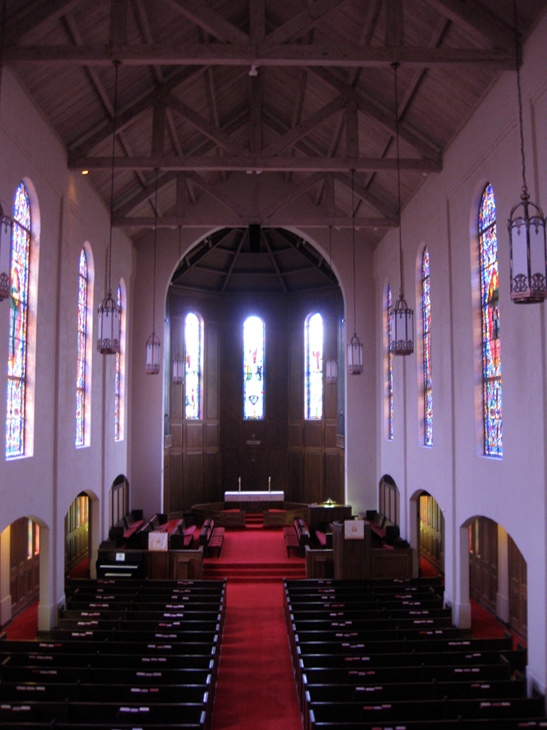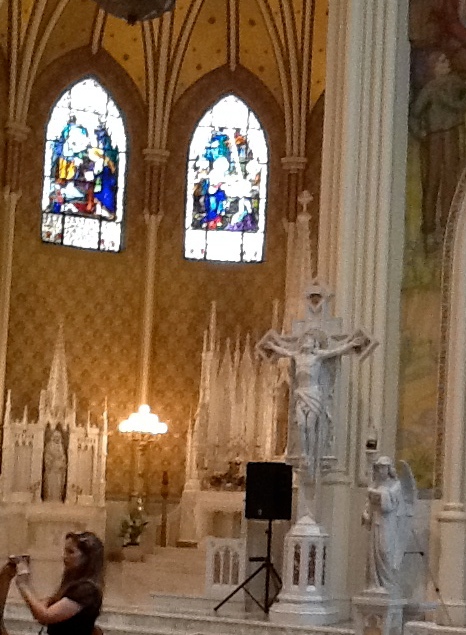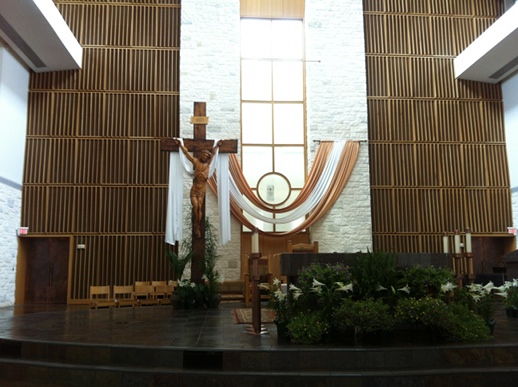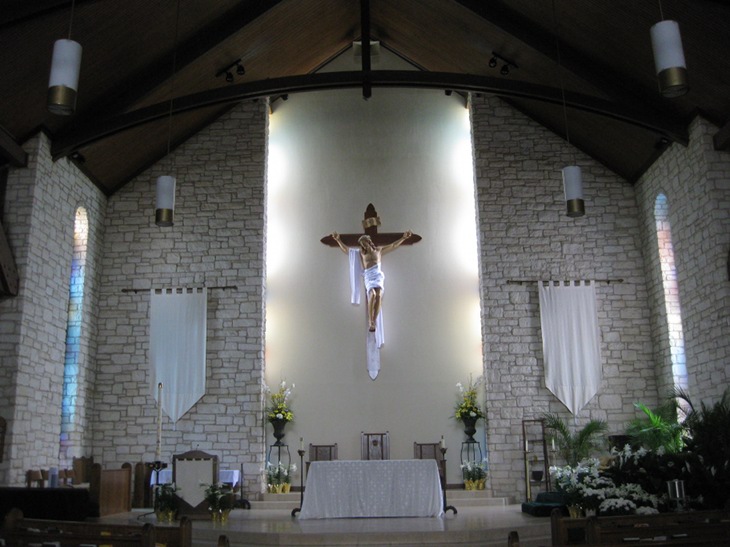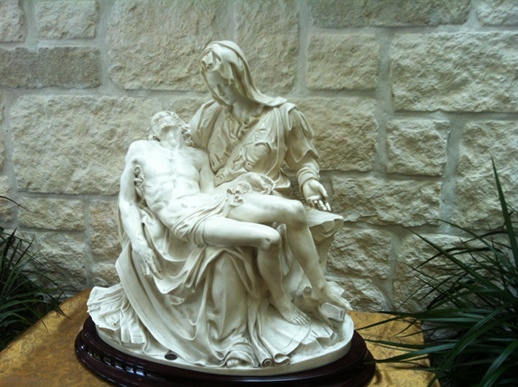| In order to create doctrinal and practical unity amongst participants, faith institutions incorporate specific institutional technologies and practices to produce a "particular human subject" (Rose 227). Both in and outside church walls, faith organizations function as institutional apparatuses, which discipline their participants through the physical structure of the sanctuary or chapel, religious symbols and icons, and theology. All of these disciplinary tactics are employed in order to coax the audience into behaving a certain way and forming specific patterns of performing faith that align with the general doctrine of the church. The story, imagery and meaning surrounding the crucifixion are central to this employment of discipline. Guilt, suffering, and ultimately redemption are central concepts to the Christian tradition and their importance is reinforced through every aspect of Christian visuality. |
|
Christian church sanctuaries have little variation in physical structure, even across traditions. Whether you are in a Protestant or Catholic church you come into the back of the room, so as to take in the structure of the imagery at the front of the sanctuary, which generally includes the display of a cross or crucifix. In addition to the visual affect of the crucifix, it is also important to analyze the "way people visit and work" in the space given the visual presence of the suffering Christ. In the Catholic tradition, in order to give reverence to Christ, participants genuflect and make the sign of the cross over themselves, visually marking them as a believer in Jesus Christ. Smith articulates the way classically constructed sanctuaries, like the Lois Perkins Chapel and the Mother Chapel at Our Lady of the Lake University, use "the pale light entering softly through painted windows [...] together with the impression that the building itself is holy, [...] to take strong hold of the imagination of all classes in the society" (716).
The centrality of the crucifix in Catholic churches, as well as images of saints and the Virgin Mary interacting with representations of the crucifix communicate to worship participants, not only an expectation of piety and discipline, but also a desire to be coveted as much by the saints as they covet the suffering Christ. Rancour-Laferriere projects a reading of an icon of the Virgin Mary by saying, "Sacrifice yourself, she seems to say, and you will gain my attention, my lovingkindness. Be like Christ, the paragon of moral masochism. Diminish yourself, humble yourself to the point of accepting pain and death on a cross of your own making" (19). Even symbols and icons that do not directly include the cross, reference its vitality to disciplining a good and true Christian, to be more like Christ. |
|
|
|
|
Forms of discipline, many times unknowingly, come from others practicing the faith. Furst and Denig remark, "the best symbol is the people who practice it [the faith] well" (14). During worship services it is the responsibility of those knowledgeable of the faith and its disciplining technologies to visually cue those less familiar with when to kneel or when to respond in unison. The ways participants respond to the image of the crucifix at the front of a chapel are often shaped by the pattern of reactions by other participants. Promey quotes Pierre Bourdieu's theory on the "ritualized social body" and its co-existence with "a symbolically constituted spatial and temporal environment" in order to integrate participants into understanding the importance of sacred space (127).
The theology and doctrine of the cross and the suffering Christ that is taught from the pulpit also directly affect how the audience interacts with religious institutions and its symbols. 1 Peter states, "Slaves, accept the authority of your masters with all deference not only those who are kind and gentle but also those who are harsh. […] If you endure when you are beaten for doing wrong, what credit is that? But if you endure when you do right and suffer for it, you have God's approval. For this you have been called, because Christ also suffered for you, leaving you an example, so that you should follow in his steps" (1 Peter 2:18, 20-21). Hearing this verse read from the pulpit while simultaneously being confronted by the image of the crucifix calls the viewer not only to have admiration for the cross, but also to feel guilt and an obligation to perform the same "moral masochism" that Jesus did when he took up the cross (Rancour-Laferriere 14). Institutional technologies such as the architecture and layout of sanctuaries, religious icons of saints, as well as preached theology all serve to supplement the image of the crucifix in the process of disciplining participants into taking up the attitude and meaning of the cross in their own lives. These elements coax viewers into determining their personal calling to "be like Christ" and be disciplined by the expectation to follow in Christ's footsteps (Rancour-Laferriere 19). |
| Intercalibration and Tangibility |
|
Home Page |
